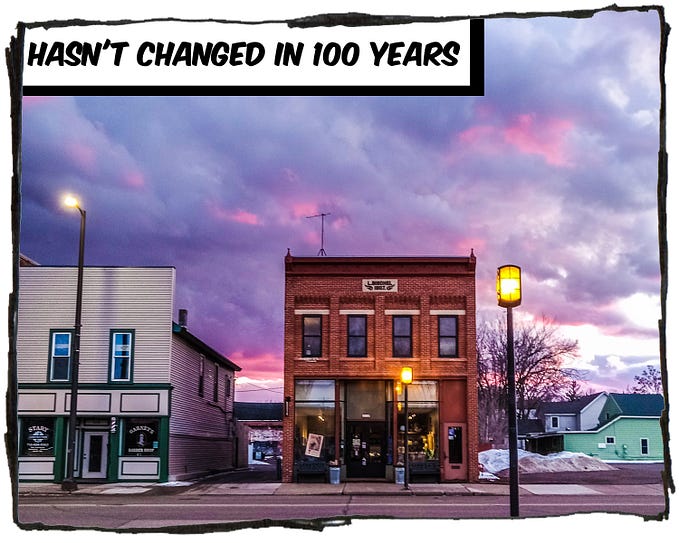The Power of User-Centered Design: A Look at Airbnb’s Design and User Experience
Have you ever wondered how a company like Airbnb managed to revolutionize the travel industry by creating a user-centric experience that also became a profitable business?

Well, I recently stumbled upon an interview with Brian Chesky, one of the co-founders of Airbnb, and was blown away by their approach to user-centered design.
I couldn’t help but want to learn more about their methods and how I, as a UX professional, could apply their learnings to my own projects.
If you’re also curious about how Airbnb implemented user-centric design and want to join me on a deep dive into their process, then let’s get started!
Airbnb has become a household name in the travel industry, revolutionizing the way people travel and experience new places. At the heart of Airbnb’s success is its user-centered design and its commitment to delivering value to users through a seamless and emotionally resonant user experience.
How it all started?
Airbnb, the popular online marketplace for lodging and experiences, was founded in 2008 by Brian Chesky, Joe Gebbia, and Nathan Blecharczyk.
The three friends were struggling to pay rent on their San Francisco apartment and decided to rent out air mattresses on their living room floor to attendees of a design conference in the city.
The idea was a success, and they soon realized that they were onto something big.
The founders recognized that there was a need for an alternative to traditional hotels, particularly for budget-conscious travelers who wanted to experience a destination like a local.
They also saw an opportunity to help people make extra money by renting out their spare rooms or homes. With these goals in mind, Airbnb was born.
From the outset, Airbnb’s founders were committed to creating a platform that was easy to use, visually appealing, and fostered a sense of community.
They believed that travel was not just about visiting new places, but also about connecting with people and experiencing new cultures. This vision has been at the heart of Airbnb’s success.
Since then Airbnb has built a $30+ billion company by offering travelers a way to book unique homes and experiences in more than 100,000 cities around the world.
A key driver of Airbnb’s success has been its relentless focus on user experience through design. By putting users at the center of everything they do, Airbnb has created a seamless and delightful experience that keeps people coming back.
Now, let’s take a closer look at the key elements that make Airbnb’s user experience so effective, and what we can learn from it as UX professionals.
High-quality photos
When Airbnb was first launched in 2008, the founders noticed that many listings on the platform had low-quality photos, or no photos at all.
This lack of visual information made it difficult for potential guests to get a sense of what the accommodations were like, ultimately leading to a negative user experience.
To solve this problem, Airbnb implemented a program called “professional photography,” where freelance photographers were hired to take high-quality photos of hosts’ homes.
This visual feast makes an emotional connection with users and fuels the desire to book a stay.
This program was an immediate success, leading to an increase in booking rates and an improvement in the overall user experience.
Personalized recommendations
Airbnb did not stop at improving photo quality. Over time, the company has continued to invest heavily in UX and design. One of the most significant changes was the overhaul of the company’s mobile app in 2016.c
The new app was designed to be more intuitive and user-friendly, focusing on personalized recommendations and a streamlined booking process. This redesign was well received, and the app has since been praised for its ease of use and attractive design.
Another aspect of Airbnb’s design that sets it apart from traditional hotels is the use of storytelling to create an emotional connection between guests and hosts.
Each listing on the platform features a detailed description and photos that tell a unique story about the host and their home. This approach has helped Airbnb to stand out in the market, attracting users looking for a more personalized experience.
Intuitive Search and Convenience
Airbnb’s search is incredibly easy to use with many filters to refine your search by price, location, amenities and more. You can filter by categories like unique homes, vacation spots, or even by experiences offered.
Guests can use an interactive map to explore listings by location and zoom in on specific neighborhoods. The map helps users discover interesting homes in areas they may not have considered.
The search results page is clean and well-organized, with photos, prices, reviews and essential info previewed for each listing. This preview helps users quickly determine which listings they want to explore further.
Airbnb’s platform is designed to be convenient and easy to use. Users can search for listings, book a stay, and communicate with hosts all through the platform. The platform also offers features like Instant Book, which allows users to book a stay without waiting for approval from the host.
Experience Section for Extra Adventure and Community
Airbnb recognizes that travel is not just about visiting new places, but also about connecting with people and experiencing new cultures.
The company offers a feature called “Experiences,” which allows users to book activities led by locals, such as food tours, craft workshops or guided tours.
This not only gives travelers a unique and authentic experience, but it also fosters a sense of community on the platform, as hosts and guests connect with each other and share their knowledge and experiences.
The experience category adds a new dimension for guests seeking meaningful connection and adventure at their destination. It’s an opportunity for guests to explore more fully the place they’re visiting.
Transparency
Another key design element of Airbnb is its commitment to transparency. The platform encourages hosts and guests to leave reviews of their experiences, which helps build trust and credibility.
Airbnb also offers a feature called “Instant Book” that allows guests to book a property without waiting for approval from the host. This has streamlined the booking process and made it more convenient for users, while also reducing the potential for miscommunications or misunderstandings between hosts and guests.
One of the key features of Airbnb’s platform is its transparent pricing model, which shows the total cost of a booking upfront, including any fees or taxes. This helps to build trust with users and eliminates any surprises or hidden costs.
Safety
Airbnb’s user verification process is a key part of its user experience, allowing hosts and guests to verify their identity using government-issued IDs or other forms of identification.
This process helps to build trust and safety on the platform, ensuring that users are who they say they are.
Takeaways for UX Professionals
As UX Professionals, we can learn from Airbnb’s approach and apply these principles to our own projects to create experiences that truly delight and engage our users.
Here are some valuable insights I gathered from Airbnb, on how to implement user-centric design:
- Build trust through transparency. Make sure your design is transparent, so users can trust your platform.
- Keep your platform convenient and user-friendly to increase satisfaction and reduce friction.
- Create a sense of community among your users to foster trust and belonging.
- Prioritize safety and security features like user verification to build trust with users.
- Put the user at the center of the design process. Design experiences that are both functional and emotionally meaningful.
- Pay attention to the little details that can make a big difference in the user experience.
- Test and iterate on your designs to ensure they meet user needs and deliver value.
- Personalize the user experience with relevant recommendations and a streamlined booking process.
- Use storytelling to create an emotional connection between guests and hosts, making the experience unique and personalized.
In conclusion, Airbnb’s remarkable success is a testament to the power of user-centered design and the significance of creating experiences that are both functional and emotionally meaningful.
Airbnb’s emphasis on UX and design has played a pivotal role in its growth and success. The company’s investment in innovative features, platform quality improvement, and unique personalization has set it apart from its competitors.
As UX professionals, we can learn valuable lessons from Airbnb’s UX and design story and apply these insights to enhance the user experience on our own platforms.
With this in mind, I highly recommend watching the full-length interview with Brian Chesky here.
I’d love to hear your thoughts on the matter.
If you enjoyed this content, feel free to follow me on LinkedIn and Medium for more exciting topics.







